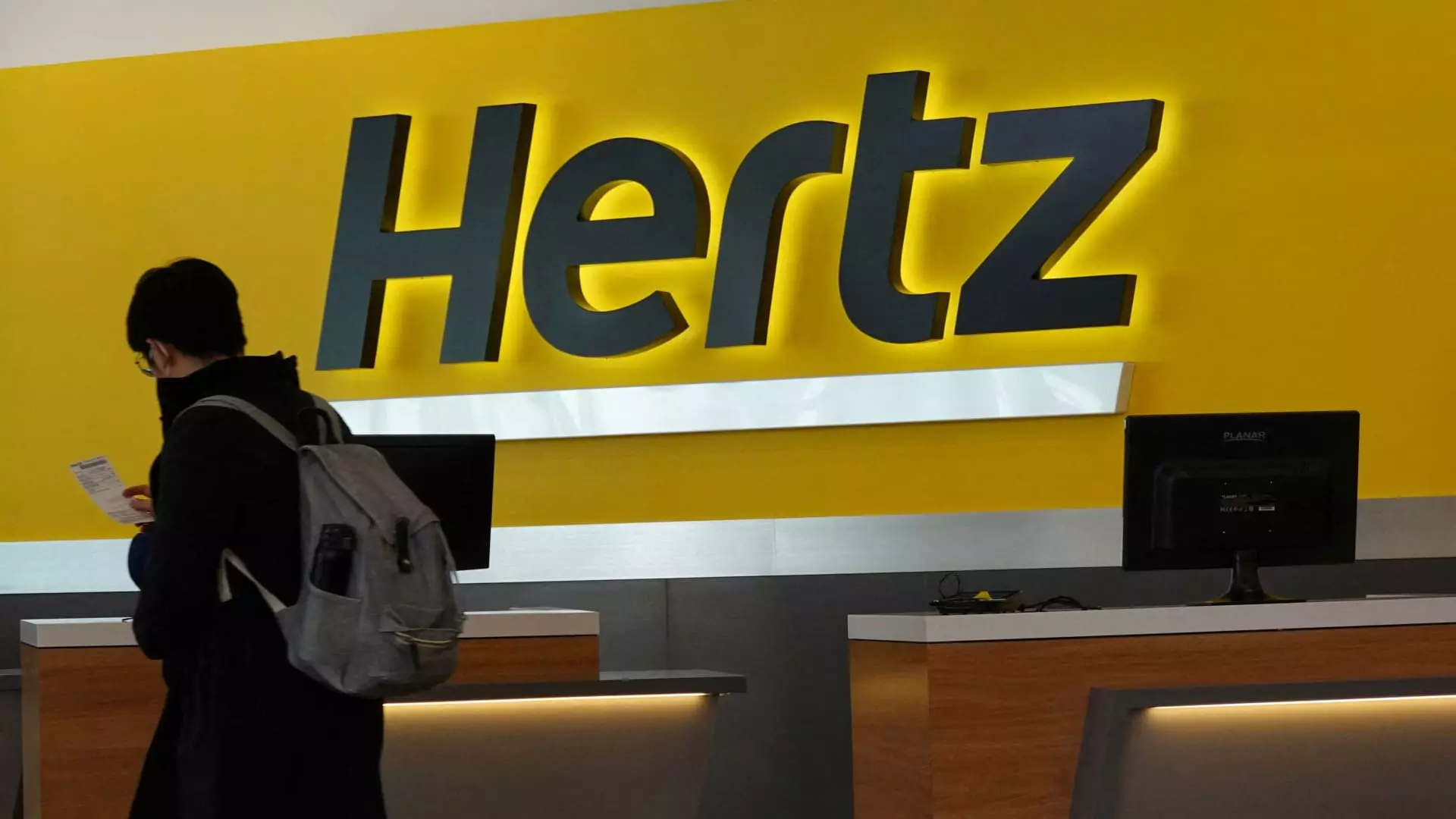Hertz Global Holdings is experiencing a turbulent time, and the latest quarterly earnings report exemplifies this stark reality. The company, once a giant in the car rental industry, saw its stocks drop by over 20% in a single day following investor disappointment. The reported losses and plans for dilutive stock sales signal a series of alarming issues that extend beyond just the numbers. It is a broader tale of a corporation struggling to find its footing in an evolving market landscape.
Financial Bleeding and Stock Market Reactions
Following the recent announcement that Hertz incurred an adjusted loss of $1.12 per share — significantly worse than the anticipated 97 cents — the stock market reacted decisively. In an environment where investors favor certainty, Hertz’s erratic performance led to extensive sell-offs, indicating a loss of confidence among shareholders. The company’s automotive revenue also suffered greatly, missing estimates with only $1.81 billion earned when $2 billion was expected. Such figures are a bitter reminder that mere survival is no longer adequate when companies operate in fiercely competitive circumstances.
The Risky Move: Stock Offering Amidst Turmoil
Compounding its woes, Hertz announced a $250 million at-the-market stock offering with the intent to improve debt levels. While the CFO, Scott Haralson, suggests this is a strategy aimed at “deleveraging,” it feels more like a desperate attempt to plug a gaping financial wound. Stock offerings, especially in turbulent times, can often be viewed as a sign of instability rather than resilience. The company is betting on future earnings improvement, but as analyst Dan Levy points out, the risk associated with diminished demand casts a long shadow over these optimistic projections.
Market Dynamics: The Impact of Tariffs and Tourism
Hertz’s operations have been jeopardized by a confluence of issues, including tariffs enacted during Donald Trump’s administration, which have shaken the supply chain for both new and used vehicles. With consumer sentiment faltering amid rising costs, the ramifications are felt throughout the tourism and rental sectors alike. Less domestic travel and increased pricing mean that fewer people are opting for rental cars, resulting in decreased bookings. Hertz’s response? A reduction in fleet size — a move that, while counterintuitive to classic business growth models, reflects their “Back-to-Basics Roadmap.” But this raises an important question: Is cutting down on fleet size a prudent strategy, or a recipe for further market stagnation?
Strategic Actions and Future Outlook
The company claims to be prioritizing cost-cutting and optimizing vehicle utilization, with aspirations of generating “more demand than we can satisfy.” The irony is palpable; in an effort to streamline operations, Hertz risks alienating potential customers by not having enough vehicles at their disposal. The logic falls short: restrict supply to create demand? In a consumer-driven world, this can backfire spectacularly. Historical evidence suggests companies often lose market presence when they misjudge consumer demand.
The silver lining touted by Hertz executives is the impressive $92 million reduction in direct operating expenses year-over-year. However, with revenue falling by 13% due to fleet downsizing, it is unclear whether cost reductions will truly drive long-term sustainability. Countdown towards their target of getting depreciation per unit below $300 is another target that seems ambitious under current conditions.
Stock Performance Under Pressure
The perception of Hertz’s brand has been primarily positive, reinforced by its stock climbing 90% earlier in the year, thanks in part to significant investments from prominent hedge funds like Bill Ackman’s Pershing Square Capital Management. Yet, with such rapid gains, it can be dangerously easy to slip into complacency. Now facing a hard dose of reality, it is clear that speculation based on fleeting optimism must be meticulously balanced with robust risk management strategies.
Hertz’s current plight underscores the frailty of quick-fix strategies in volatile markets. The company is caught in a precarious balancing act, adjusting its sails while navigating choppy waters. It remains to be seen whether they can reclaim their footing or whether their recent missteps will serve as the final chapter of a once-mighty brand.

